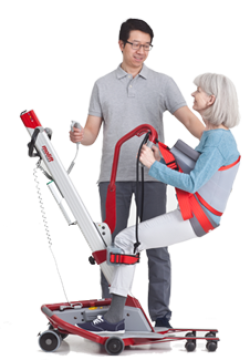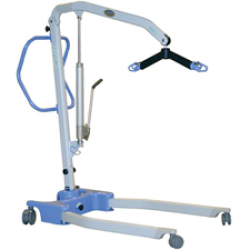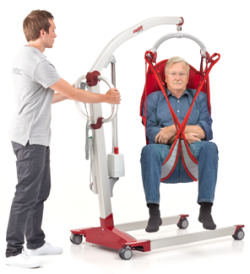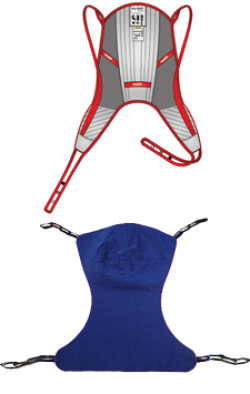Patient Lifts For Home Use
Patient lifts allow an individual do be lifted and transferred with minimal effort and greater safety. Some of the main reasons for selecting a patient lift include: Patient is too heavy to be safely transferred without assistance of a lifting device; to prevent injury to the Caregiver or the patient during transfers; and the ability to lift patients from the floor.
Patient lifts assist in the lifting and transferring of patients from the bed to the wheelchair; the wheelchair to the commode; from the floor to the bed or chair.
Types of Patient Lifts

Sit to stand Patient Lifts
Patient lifts come in a wide variety of types and styles. Each style has its specific purpose and use depending on the mobility level of the patient.
Sit to stand patient lifts are becoming more common for in home use, primarily due to the ease of use, versatility and speed of patient transfers.
Often patients feel more secure and confident with the sit to stand transfer with their feet underneath them. This is a very different sensation than being suspended in a sling style patient lift.
See Sit to Stand Patient Lifts »

Manual Patient Lifts
Hydraulic patient lifts are among the most commonly used in the home due to insurance reimbursement and facility recommendation.
Although the most common patient lifts are hydraulic, or manual, patient lifts are the most difficult to operate for the caregiver and unpopular with patients due to the excessive handling required to position the lift sling as well as moving the lift while the patient is suspended.
See Manual Hydraulic Patient Lifts

Power Patient Lifts
Power patient lifts are similar in every way to the hydraulic patient lifts, except the power lifts have an electric actuator that does the lifting.
Power lifts typically use the same slings and caregivers follow the same procedures. The real benefit is that there is no manual pumping involved. This allows the caregiver to better position the patient during the lift transfer. This is particularly important when a patient requires assisted wheelchair positioning.

Patient Lift Slings
Patient lift slings come in a variety of shapes sizes and materials. Sling selection is crucial for a safe, comfortable, and successful transfer.
Some slings have a U shape to them and allow fitting the sling to the patient without lifting the patient at all. The U straps simply fit under each leg. Additionally, the sling can be removed after a transfer to a wheelchair, avoiding the need for the patient to sit on the sling while in the chair.
Other slings, often called full body slings, require considerable patient maneuvering to properly position the sling under the patient for lifting. This can be a process for both the caregiver and the patient.


